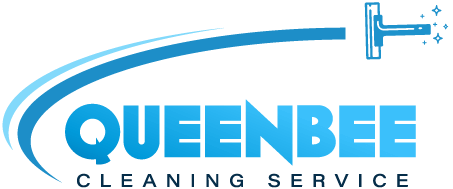Office Cleaning Duties
Cleaning and organizing an office make it appear professional to customers, business associates, and coworkers. When there is clutter, things become unorganized. As a result, daily cleaning is required to keep the office clean. In this article, let’s learn about office housekeeping duties with QueenBee
-
What exactly is office housekeeping?
It entails keeping work areas neat and orderly, keeping halls and floors free of slip and trip hazards, and removing waste materials (such as paper and cardboard) and other fire hazards from work areas.
-
Why is it important for us to focus on housekeeping at work?
Workplace dangers can be reduced or eliminated with good housekeeping. Numerous incidents are frequently caused by poor housekeeping procedures. If paper, clutter, garbage, and spills are considered as common occurrences, then other, more serious dangers might also be taken for granted.
Not merely cleanliness is part of housekeeping. It include maintaining clean and organized work environments, keeping hallways and floors clear of trip and fall risks, and removing waste (such as paper and cardboard) and other fire dangers from work places. It also necessitates paying attention to crucial particulars including the design of the entire workspace, aisle marking, the suitability of storage options, and upkeep. A fundamental component of incident and fire prevention is good housekeeping.
Effective housekeeping is a continuous process; it is not a one-time or sporadic cleanup. Cleaning up in a “panic” is expensive and ineffectual at lowering incidences.
- What components make up a successful housekeeping program?
- Maintenance
The most crucial aspect of excellent housekeeping may be the upkeep of buildings and equipment. Buildings, machinery, and equipment must be maintained in order to be functional, safe, and in good condition. It involves keeping facilities clean, as well as frequently painting and washing the walls. Broken windows, broken doors, broken plumbing, and damaged floor surfaces can give the impression that a workplace has been neglected; they can also lead to accidents and have an impact on work procedures. Therefore, it’s crucial to replace or repair damaged or broken products as soon as you can. The inspection, maintenance, care, and repair of tools, equipment, machines, and processes are all covered by a good maintenance program.
- Area of Welcome/Reception
Vacuum the front area of the office on a regular basis, depending on daily traffic. For example, the area may require vacuuming every hour or every four hours. Straighten magazines and clean up litter. Maintain the cleanliness of the receptionist’s desk.
- Bathrooms
Every afternoon and night, sweep the bathroom floors. Hourly checks are used to clean bathrooms. Using an industrial strength cleaner, clean and disinfect the toilets, counters, and sinks. For quick cleanups, keep a small broom and dustpan near the door. Trash should be removed every night and as needed throughout the day.
- Workspaces for Individuals
To quickly dispose of trash, place waste baskets in each cubicle or office space. Wipe down the desk with disinfectant wipes after cleaning the keyboards and mice. Disinfect telephones and headsets as well. Every night, vacuum the floors.
- Dining Room/Breakfast Room
Floors in the break room/eating area should be swept whenever there is trash in sight on the floors. Before and after eating, mop the floors and disinfect the tables, counters, and the outside of the refrigerator(s) with antibacterial cleaner. Weekly clean refrigerators, removing unused food and bags. After lunch and at night, empty trashcans.
- Total Office Space
Clean the entire office space every night and as needed. Vacuuming only when it is not disruptive to the office. Sweep whenever there is trash. Wipe down office equipment on a daily basis to avoid dust accumulation and to keep it looking professional. Gather trash from each waste basket that contains trash. Use carpet freshener before vacuuming to give the office a fresh scent.
- Employee Facilities
Facilities for employees must be sufficient, spotless, and well-maintained. For the purpose of storing the personal items of employees, lockers may be required. Each shift, restrooms must be cleaned at least once. Additionally, they require a sizable supply of soap, towels, and disinfectants, if necessary.
Employee facilities should offer any necessary additional measures, such as showers, washing facilities, and changing rooms, if workers are employing hazardous materials. Some facilities might call for two locker rooms separated by showers. By keeping work clothes apart from the clothes that they wear at home, using such double locker rooms enables employees to shower off toxins from the job and decreases the possibility of contamination of their “street clothes.”
Where dangerous products are handled, it should be illegal to smoke, eat, or drink in the workplace. The dining area ought to be kept apart from the workspace and dutifully cleaned after each shift.
Conclusion
The word “office housekeeping” refers to a lot more than just cleaning, dusting, and mopping. Offices, factories, warehouses, and other manufacturing and distribution facilities are all included in workplace housekeeping.
Workplace cleanliness is important because it keeps employees safe from harm, builds brand recognition, and improves the working environment. The regulatory organizations may order the company to close the facility if proper housekeeping is not done at the place of business.
If you have any office cleaning needs, consider QueenBee Cleaning Service. We guarantee to bring the best service with reasonable price and fast service.
QueenBee Cleaning Pty LTD
- Address:
- 22 Hopetoun CCT, Deakin, ACT, 2600
- 3/5 Daphne close Kingswood NSW 2747
- Hotline: 1800 1 CLEAN (25326)
- Email: info@queenbeecleaning.com.au
